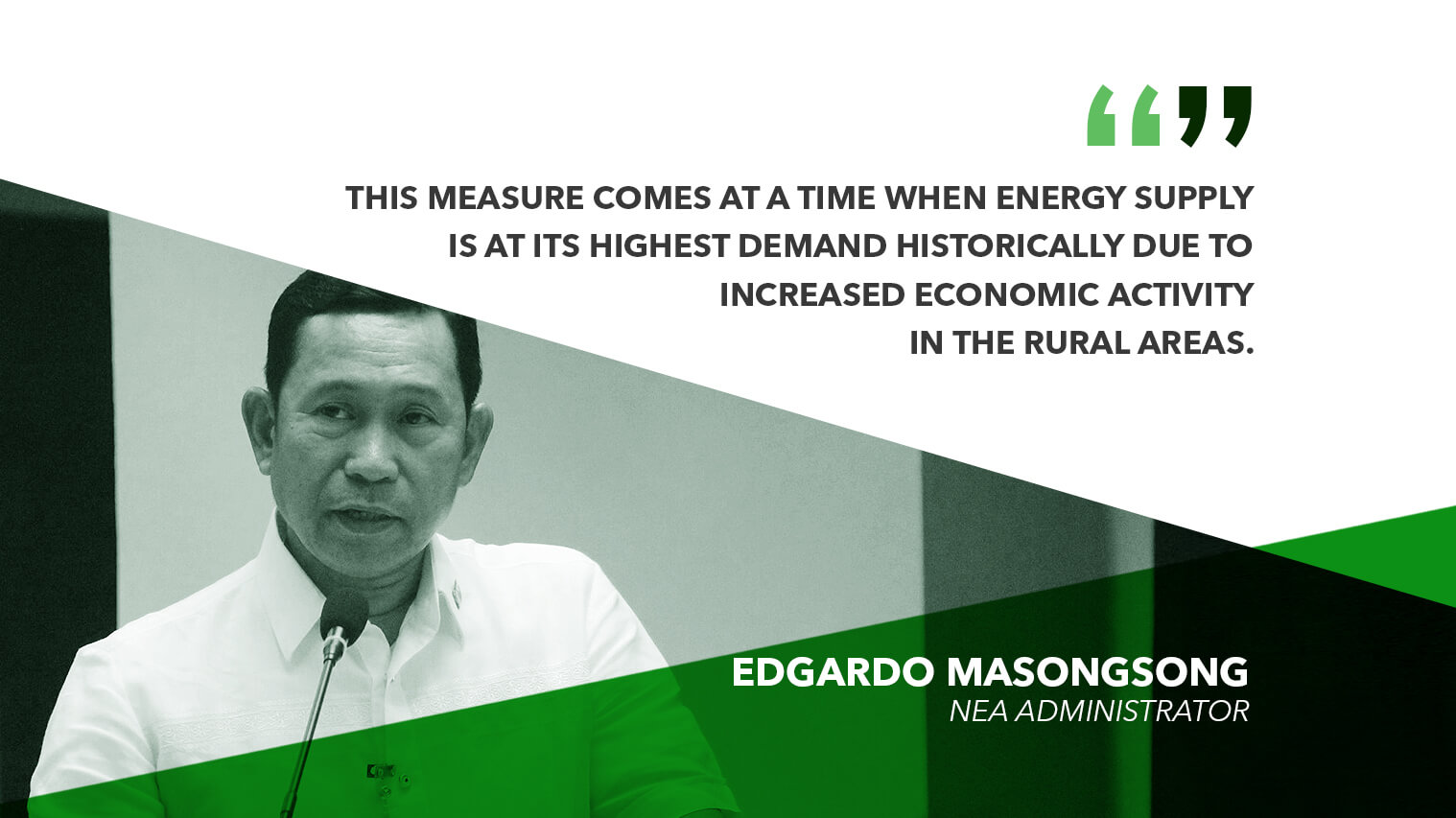State-run National Electrification Administration (NEA) on Wednesday welcomed the passage of the “Energy Virtual One-Stop Shop” bill at the bicameral conference committee level.
In a statement, NEA Administrator Edgardo Masongsong said the approval of the measure was very timely, citing the ever increasing energy demand in the country.
“This measure comes at a time when energy supply is at its highest demand historically due to increased economic activity in the rural areas and the government’s hastened capital outlay expenditure primarily for public infrastructure construction,” Masongsong said.
“This measure when enacted into law will insulate the country from unexpected shocks from the dynamics of the global market and ensure energy security.”
“Aside from further satisfying the accelerated power demands being distributed by electric cooperatives in the provinces, this measure when enacted into law will insulate the country from unexpected shocks from the dynamics of the global market and ensure energy security, especially in developing regions of the country,” the NEA chief added.
Recently, the Senate Committee on Energy and the House Committee on Energy agreed to adopt the Senate Bill No. 1439, which seeks to streamline the permitting process of power generation, transmission and distribution projects through the establishment of an online system called the Energy Virtual One-Stop Shop or EVOSS.
Once enacted into law, EVOSS is seen to accelerate the permitting process for energy projects and to cut red tape in the government. Under the bill, EVOSS will be managed by the Department of Energy (DOE) while its operations will be determined and monitored by a Steering Committee.
Once enacted into law, EVOSS is seen to accelerate the permitting process for energy projects and to cut red tape in government.
Senate Committee on Energy chairman Sen. Sherwin Gatchalian is optimistic that the bill will “drive down electricity costs and provide significant savings to power consumers by modernizing and streamlining the permitting process behind power infrastructure projects.”


